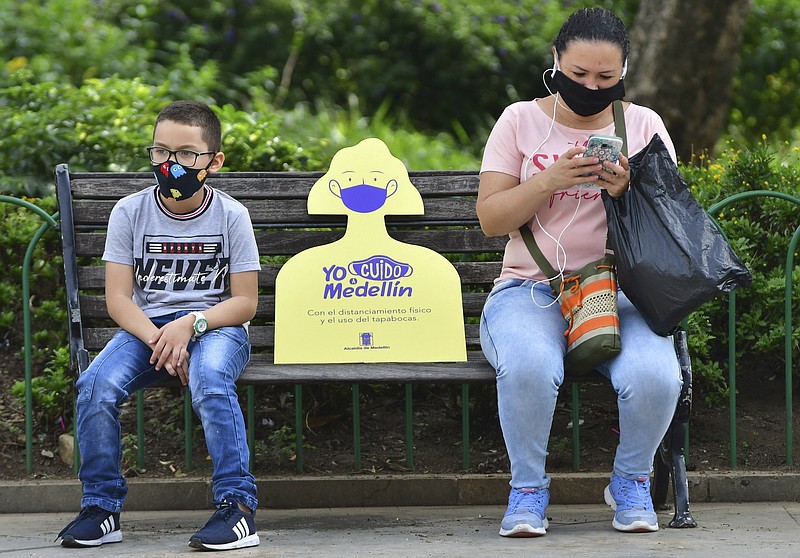The group of 10 teenagers was tightly crowded onto two concrete picnic table benches at East Brainerd's Heritage Park one night last week, laughing and talking like only carefree youth with no responsibilities and on summer break from school can.
Not a one was wearing a mask, and social distancing? With 10 on benches that might comfortably hold six, there was none of that.
When you're the age of the teenagers at the park, who thinks of getting gravely ill or dying? Most understandably feel like they will live forever.
In 2019, no one would fault them for feeling so happy-go-lucky. In 2020, though, they could be spreading a deadly disease.
Across the country, but largely in the South and West where more people are outdoors, cases of the COVID-19 virus among young people are on a steep climb. In Florida, according to an Associated Press article in Thursday's Times Free Press, young people ages 15 to 34 now make up 31% of all cases, up from 25% in early June. And throughout the nation for the week ending June 7, according to the Centers for Disease Control and Prevention, 43 cases per 100,000 people were confirmed in the bracket of 18-to-49-year-olds but only 28 cases per 100,000 for those 65 and older.
Anecdotal evidence from contact tracing in various states across the country also has shown how the virus has spread from college fraternity parties, bars and brew pubs.
And no one is citing the numbers yet, perhaps because of the national media's complicity in encouragement, but cases of the virus have undoubtedly spread - and will spread further - because of mob protests in the wake of the death of Black suspect George Floyd at the hands of white police in Minneapolis.
As we have said throughout this quarter year-plus with the country affected by COVID-19, so much is unknown. Models have been wrong, equipment hoarding was unneeded, and the decision for states to close their economies is still being debated.
Indeed, a study by a nonprofit Kansas group cited by the Wall Street Journal editorial board this week said lockdown measures imposed by governors did little to save lives during the pandemic. It also said virus fatalities per capita in states that kept their economies open were on average about 75% lower than those that locked down.
"GOP governors have faced enormous media pressure to lock down their states in solidarity with Democrats," the newspaper's editorial board wrote, "and some now are getting browbeaten to shut down again amid coronavirus flare-ups. So it's worth pointing out that states that didn't lock down this spring kept the virus under control and experienced fewer deaths than most that did."
Nevertheless, we can say two things for sure.
When cases of the virus among young people rise, cases among older people - their parents, grandparents and coworkers - are also bound to rise. And older people, especially those with already compromised immune systems from other illnesses, are far more vulnerable to the virus than young people.
So, while the single-day death rate from the virus fell to a three-month low on Sunday, the rapid increase in positive tests among young people may make that three-month low an aberration when the young people - many of them asymptomatic - bring the virus home to their elders.
After all, eight out of 10 deaths from the virus among people in the U.S. have been in people ages 65 and older.
And then there is the wearing of masks. Like protection greatly reducing a woman's chance of pregnancy, a mask greatly reduces one's chances of getting the virus, but even more so of spreading it.
Individuals should take the responsibility to protect themselves from the virus and from potentially spreading it to others by wearing a mask. But it has become clear to us that more retail businesses - especially those where more than a couple of customers would be in a store at the same time - should require masks.
As we noted earlier, so much is unknown about how the virus will act. Many epidemiologists thought warmer weather would bring about a decline in cases and a lull until late fall. But so far that has not proven to be the case, and positive tests are on the rise. Young people who were once thought to be more immune to the virus are testing positive in growing numbers.
But masks? They're not infallible, but we know they work and can save lives.
On Wednesday, it was reported a University of Washington computer model calculated the country will see nearly 180,000 deaths - about the number of people in Chattanooga - by Oct. 1. With the wider use of masks, especially by young people, that level may not be reached.
As commercials produced by the American Lung Association used to remind us, "It's a matter of life and breath."
